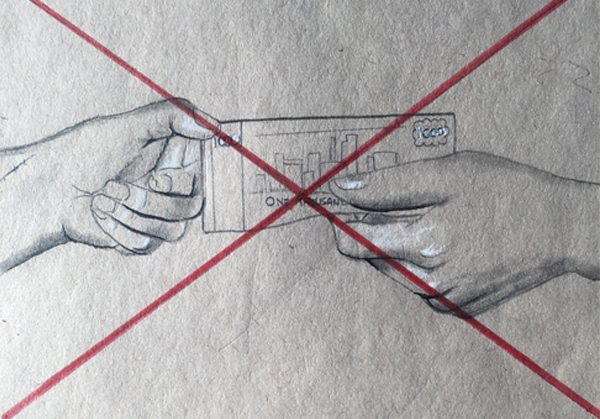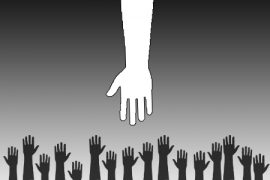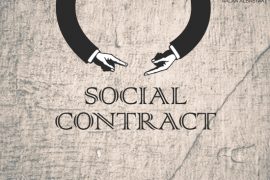The world needs to take a step back and stand against a major hurdle to its development: Corruption.

Consider this: 1 trillion dollars and another 2.6 dollars trillion are stealthily put into the wrong pockets every year, the first paid in bribery and the latter stolen through other corruptive means. These figures give corruption the well-earned title of the world’s biggest obstacle against social and economic development (United Nations Development Programme (UNDP), 2016).
In its many forms, bribery, embezzlement, lobbying; corruption is a deep-rooted concern in rich and poor countries. The Transparency International coalition defines corruption as “the abuse of entrusted power for private gain” (Transparency International (TI), 2017). In its later stages, corruption is severely felt by the more fragile portions of society.
Of course, the fight against the issue is widespread and tangible. But the leniency of some people towards it only contributes to its persistence. Most of us have come across fleeting forms of it, disguised as “help” in middle school tests, or perhaps, a “gift” to driving examiners. Despite the efforts of authorities to end it, corruption finds its way into even the most solid societies through people undermining the significance of their actions.
I am a firm believer of the accumulative effect of the matter, of how a person can grow dependent on it and gradually lose sight of the morale of hard work. But the consequences of a simple act of coin-passing could befall a pedestrian or a patient, someone whose life could be affected by the dishonesty committed by another. The list of impacts is a redundant thing to add. We are all well-aware of how injustice leads to incompetence, to snatched rights, and to inequality.
The pandemic-like scale of corruption makes it one of the main challenges against the development of countries today. It diverts resources from productive uses in sectors of health, education, and research, and disrupts social development. Furthermore, it reduces the legitimacy of decision-making processes as it affects the public perception of the fairness of different operations (World Bank, 2017).
This effect is gauged and measured. A yearly index is conducted by the Transparency International global coalition against corruption to develop insight into the corruption perceived in countries. The index ranges from 0 (highly corrupt) to 100 (very clean) (TI, 2017). The nature of corruption, the illegal measures and the secrecy involved with acts of it contribute to the difficulty of observation, measurement, and reporting. Although compromised, data resources are results of direct observation or perception surveys (Ospina and Rozer, 2016). The reports, based on the latter, have found the global average to be 43, falling under the midpoint in 2016 (TI, 2017). This indicates that the effects of a stretching wealth gap (wherein the rich get richer and the poor get poorer) are constantly feeding into the cycle of corruption and unequal distribution of power. The rich in fragile countries exploit their power to create more wealth, and the poor will ultimately receive less, be it opportunity or resources, or even the most basic of needs. In a society where filing a police complaint, finding a spot for a child at school, or seeing a doctor is an illegally fined matter, it is those who cannot pay that suffer the most.
Like the World Bank described it, corruption is not a disease that can be eradicated. Unfortunately, it is a “built-in” method of governance in some countries. Reforms should contribute to the reduction of the issue by redistributing power, as does the development process. But perhaps, the collective responsibility to end corruption starts at the individual level. We could be prone to it, and we can be made so. Everyone is susceptible, and maybe it is worth the trouble to stand like a hero a little longer in line.



